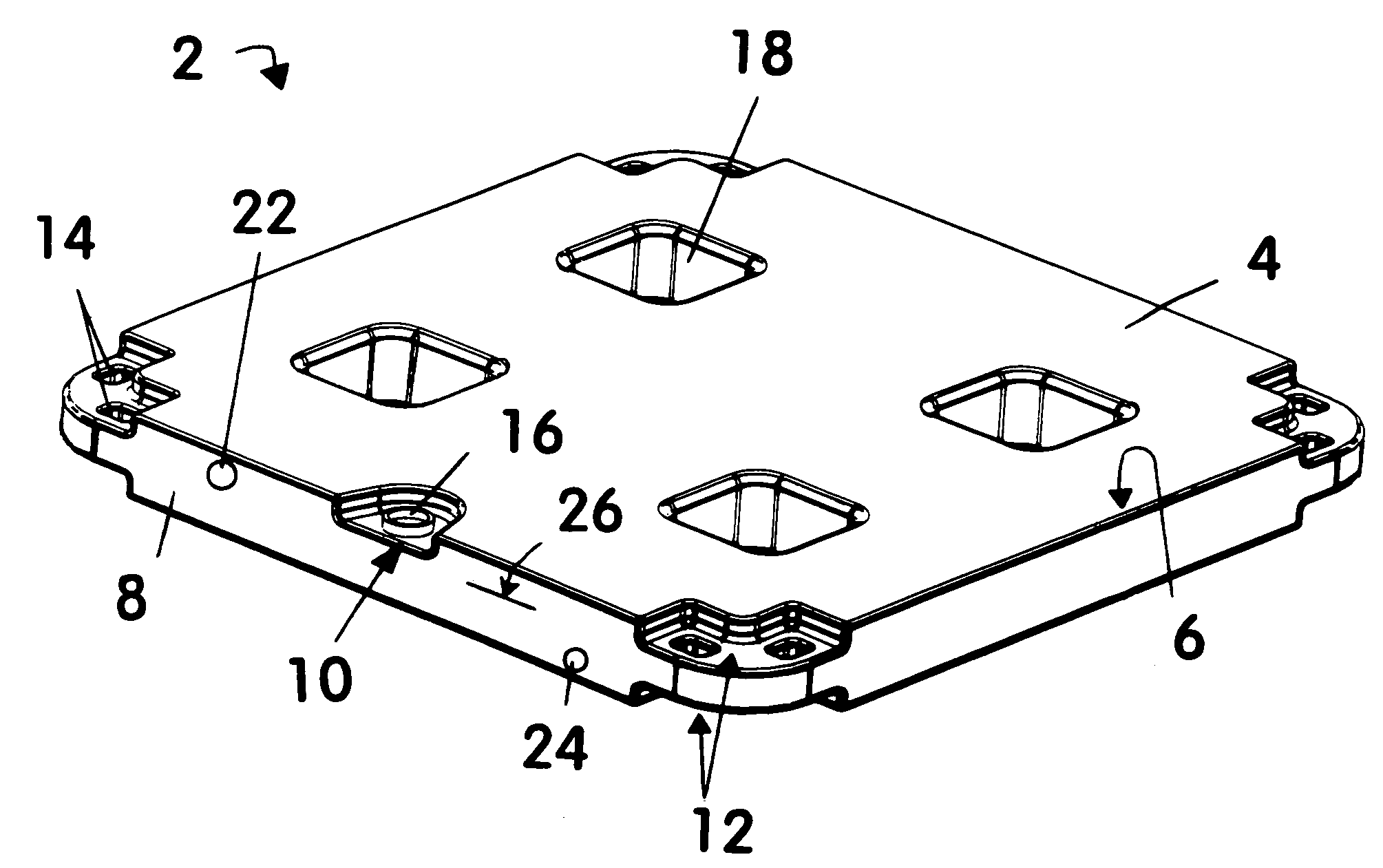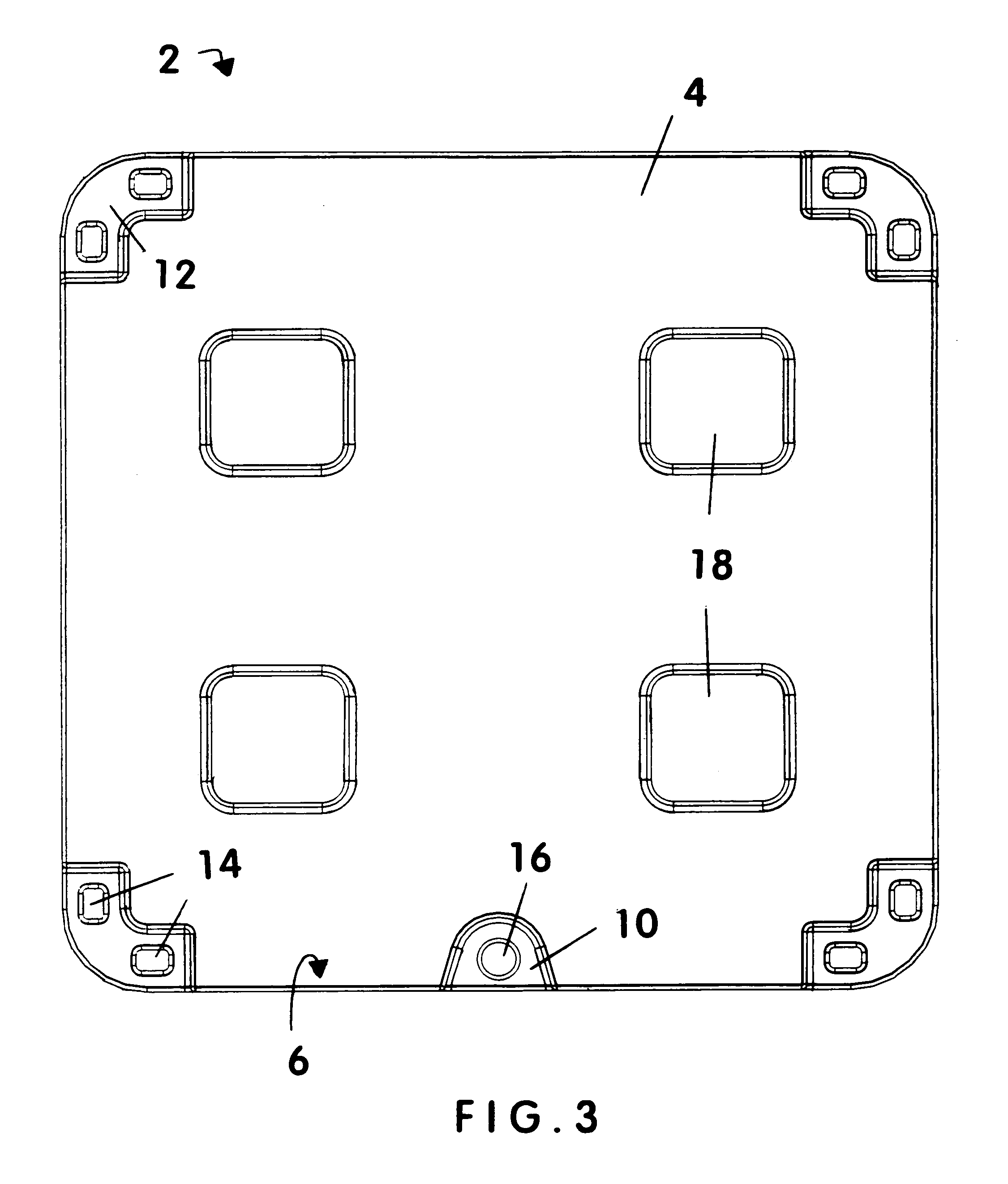Air conditioner pad
a technology for air conditioners and supports, applied in the field of ground supports, can solve the problems of not meeting the new building code requirements, affecting the operation of domestic cooling devices, and requiring installation, etc., and achieves the effects of reducing maintenance costs, reducing maintenance costs, and ensuring the effect of safety
- Summary
- Abstract
- Description
- Claims
- Application Information
AI Technical Summary
Benefits of technology
Problems solved by technology
Method used
Image
Examples
Embodiment Construction
[0014]The present invention provides a support pad 2 for an air conditioning unit (identified in FIG. 5 by the number 28. Support pad 2 has a main body 4 with a hollow interior chamber (identified by the number 34 in FIG. 2) that can be filled with fluid 36 or granular material (not shown) readily available at an installation site to make it sufficiently heavy to use as an anchor to protect the air conditioning unit 28 from movement away from its intended position of use due to adverse weather conditions, such as strong wind or flooding. The present invention support pad 2 also has perimeter tie-down openings 14 to use with tie-down straps (identified by the number 30 in FIG. 5) placed over air conditioning unit 28 to hold it in place after installation. Cut-out areas 12 below tie-down openings 14 provide clearance for tie-down straps 30 so that they do not extend below the bottom plane of main body 4 and are not subject to contact with the ground surface upon which main body 4 is t...
PUM
 Login to View More
Login to View More Abstract
Description
Claims
Application Information
 Login to View More
Login to View More - R&D
- Intellectual Property
- Life Sciences
- Materials
- Tech Scout
- Unparalleled Data Quality
- Higher Quality Content
- 60% Fewer Hallucinations
Browse by: Latest US Patents, China's latest patents, Technical Efficacy Thesaurus, Application Domain, Technology Topic, Popular Technical Reports.
© 2025 PatSnap. All rights reserved.Legal|Privacy policy|Modern Slavery Act Transparency Statement|Sitemap|About US| Contact US: help@patsnap.com



